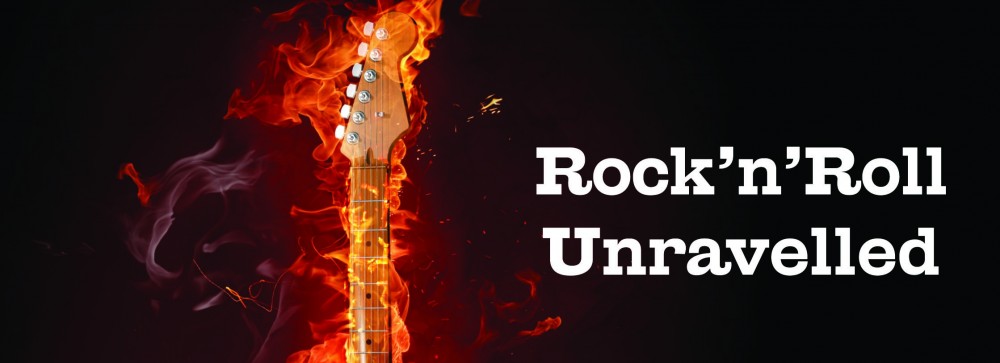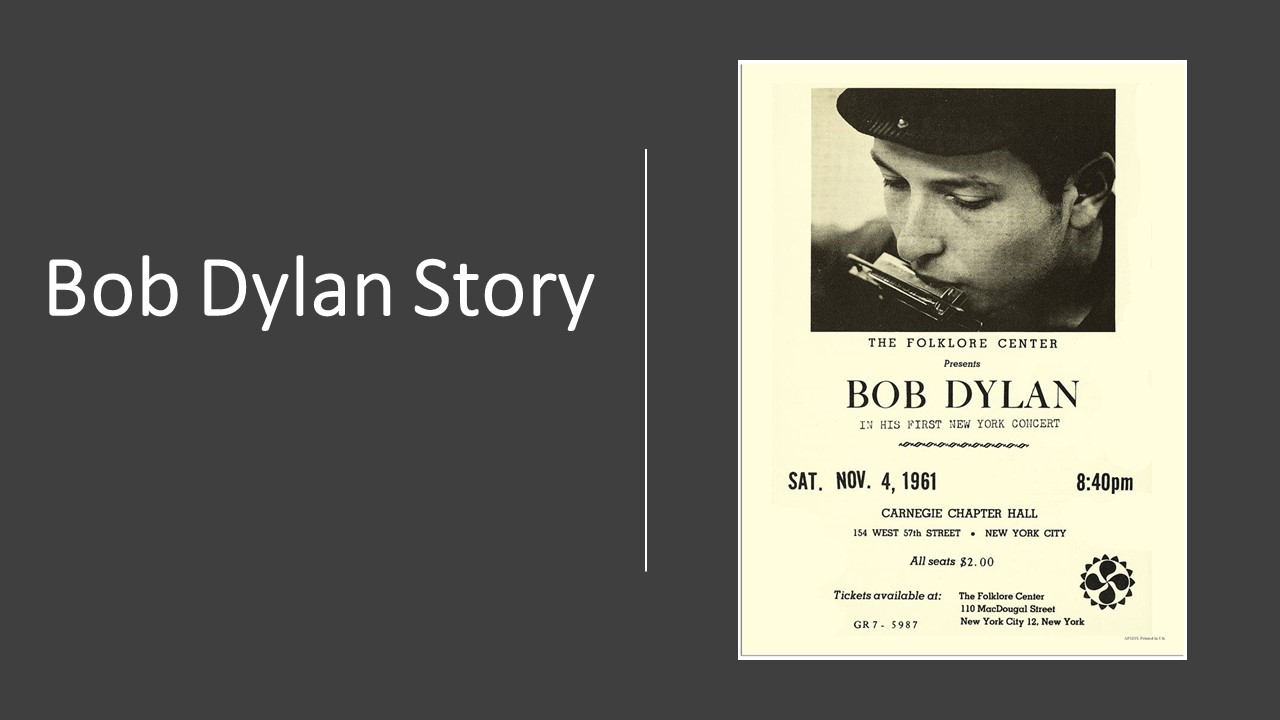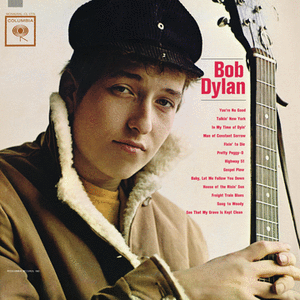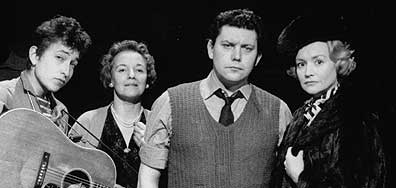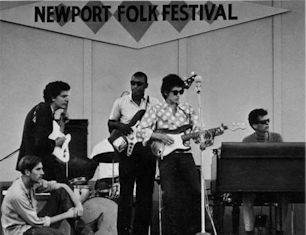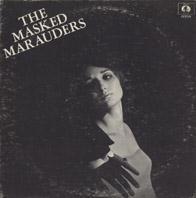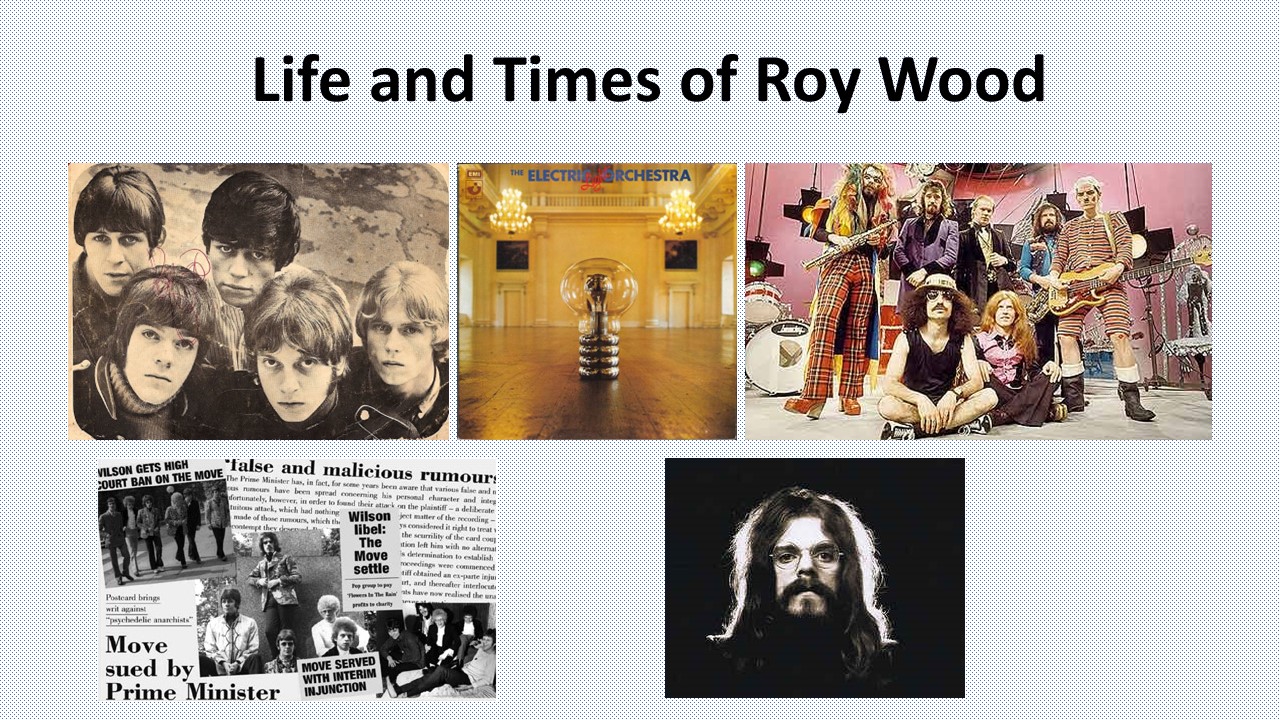Bob Dylan Landmarks
Highlights in a remarkable career
A look at some of the highlights for the career of the greatest singer-songwriter of all time – Bob Dylan Landmarks
To hear the Frank Carlyle Show live…
Derek Shelmerdine author of Rock’n’Roll Unravelled
is a guest on The Frank Carlyle Show.
Live on Facebook – Monday 9 January 2023
The whole show: 8.00 to 10.00 pm (UK)
Derek Shelmerdine’s guest spot: 8.15 to 9.00 pm (UK)
Check out which of the artists/bands talked about in the show
are on tour now…
PODCAST
Bob Dylan Highlights
Bob Dylan – The man and his music
24 May 1941
Bob Dylan was born Robert Allen Zimmerman in Duluth, Minnesota. Shortly afterwards, Bob Dylan’s family moved from Duluth to Hibbing, Minnesota.
His career started when he played in several high-school bands. In the 1959 Hibbing High School graduation Yearbook he famously gave his teenage ambition as “to join Little Richard”.
By the time that he arrived in Minneapolis to enrol at the University of Minnesota he was “Bob Dylan”. Here he developed his love of folk music, with a particular interest in folk legend Woody Guthrie.
25 January 1961
Arrived in New York, where he soon established a reputation amongst the folkies and the Greenwich Village coffee houses.
29 January 1961
Dylan met Woody Guthrie in hospital, sadly Guthrie had Huntington’s disease. He died in 1967
11 April 1961
Dylan played his first major gig in New York at Gerde’s Folk City, supporting bluesman John Lee Hooker.
First recording session
September 1961
Five months later, Dylan made his first visit to the recording studio. On this occasion he was a studio musician on Carolyn Hester’s third, eponymous, album. During the recordings he provided harmonica for three tracks, I’ll Fly Away + Swing and Turn Jubilee.
Producer John Hammond suitably impressed by Dylan, signed him to Columbia shortly afterwards.
4 November 1961
By now, Dylan was making his mark in the New York coffee houses. During this time, he moved up a gear with this first concert where people paid to see him perform. In Carnegie Hall’s Chapter Hall people paid an entrance fee of $2 to see him. Only 50-odd people attended the gig but Dylan was on his way.
2 February 1962
Following his recording session with Carolyn Hester, he was back in the studio with Harry Belafonte for his album Midnight Special. Dylan played harmonica on the title track.
Debut album – Bob Dylan
March 1962
Bob Dylan released his debut album, Bob Dylan. This contained two original songs, Talkin’ New York and Song to Woody, which was a homage to his hero, the itinerant folk singer Woody Guthrie. The album was a mixture of traditional folk and blues songs, some were credited with Dylan’s own arrangements.
Album sales were very disappointing and Dylan’s signing to the label became known as – “Hammond’s folly”.
14 December 1962
Mixed Up Confusion released in America.
Surprisingly, it was recorded with an electric backing band. Produced by John Hammond, it was withdrawn by Columbia shortly after its release. This is a highly praised collectors’ item.
The track was recorded during the sessions for Dylan’s second album, The Freewheelin’ Bob Dylan. It did not make the album because it was an acoustic-only track listing
Maybe the audience at the Newport Folk Festival in 1965 would not have been quite so surprised by Dylan’s electric set. If they were aware of this outtake, recorded over two years earlier.
First visit to the UK
13 January 1963
The BBC TV play The Madhouse on Castle Street aired in the UK. It featured an unknown Bob Dylan in his first appearance outside America.
This first visit to Britain was at the invitation of BBC director Philip Saville. He saw Dylan performing in New York’s Greenwich Village. Evan Jones wrote the play. It told the story of a man in a boarding house, who locked himself in his room in order to retire from the world.
Dylan played Bobby, an itinerant guitar player whose songs punctuated the action. The play contained four songs, Blowing in the Wind, Ballad of the Gliding Swan, Hang Me, Oh Hang Me and The Cuckoo. This was the first-ever broadcast of Blowing in the Wind.
Sadly, the BBC wiped the tape, consequently, Dylan’s debut performance is lost forever.
22 December 1962
The Madhouse on Castle Street was Dylan’s national UK debut but during his visit a handful of very lucky people saw him perform live at the Singers Club Christmas Party in London.
12 May 1963
Bob Dylan was due to appear on the Ed Sullivan Show – but it never happened.
The Ed Sullivan Show might well have helped to launch Elvis Presley’s career but this held little sway with an upcoming Bob Dylan.
For his appearance on the prestigious TV show he intended to perform Talkin’ John Birch Paranoid Blues. At rehearsals the show’s producers took exception to the song, moreover, they told Dylan that he needed to perform a different song. Dylan being Dylan, declined to change the song choice and pulled out of the show.
The song satirised the right-wing John Birch Society, with its tendency to see communist conspiracies around every corner.
The Freewheelin’ Bob Dylan
27 May 1963
Released second album – The Freewheelin’ Bob Dylan.
CBS withdrew the original version of the album shortly after its initial release. They changed four tracks and re-released the album with a new track-listing.
Consequently, the original track-listing generated one of the most sought-after albums ever released. The four tracks replaced on the first release were, Rocks and Gravel, Let Me Die in My Footsteps, Ramblin’ Gamblin’ Willie and Talkin’ John Birch Society Blues. The second version of the album replaced those tracks with, Girl of the North Country, Masters of War, Bob Dylan’s Dream and Talking World War III Blues.
The album also contained Blowin’ in the Wind, a song which heralded the age of 1960s protest songs.
The cover depicted Dylan and his girlfriend, Suze Rotolo walking down West Fourth Street in New York.
The era of the protest song was upon us.
13 August 1963
Released Blowing in the Wind single in America. One of the major Bob Dylan landmarks.
Written by Dylan, produced by John Hammond and taken from his album The Freewheeling Bob Dylan. Despite being one of Dylan’s most famous songs, it failed to trouble the charts on either side of the Atlantic.
In 1964, Toby Tyler made a demo recording of the song. He later found fame after changing his name to Marc Bolan.
13 January 1964
Released his third album – The Times They Are A-Changin’
This was Dylan’s first album to contain all original Dylan songs. Tom Wilson produced the album.
The Beatles turned on to Dylan
16 January to 4 February 1964
The Beatles played a three-week residency at the Olympia Theatre in Paris, France
It was during this gig that the Beatles discovered Bob Dylan.
A French DJ gave Paul McCartney given a copy of Dylan’s second album – Freewheelin’. Paul played it to the others and they were all amazed by what they heard.
In the Beatles Anthology book, John Lennon describes their reaction. “I think that was the first time I ever heard Dylan at all… And for the rest of our three weeks in Paris we didn’t stop playing it… We all went potty on Dylan”.
Six months later, on 28 August, the Beatles met Bob Dylan for the first time and he introduced the Mop Tops to pot.
Early chart hits, with other people singing his songs
9 June 1964
Recording Session for Dylan’s fourth album, Another Side of Bob Dylan.
Reputedly, they recorded the album in a single day.
This was Dylan’s last acoustic, folk music album.
One of the tracks on the album, All I Really Want to Do, is a great example of how other people had far more chart success with his songs than he did. In 1965 the song took both Cher and the Byrds into the UK Top-10. This gave Cher her first UK hit. It also provided the Byrds with their second UK hit. Two months earlier another Dylan song, Mr Tambourine Man, gave them a #1 on both sides of the Atlantic.
Dylan goes electric
22 March 1965
Released Bringing It All Back Home
Dylan goes electric with his first album to contain electric songs.
First hit singles
Bob Dylan Landmarks
25 March 1965
First UK hit, Times They Are A-Changin’, entered the charts – peaked at #9.
15 May 1965
First US hit, Subterranean Homesick Blues entered the Billboard Top-40 – peaked at #39.
Beat poet Allen Ginsberg is visible in the background on the video
15 June 1965 Recording session – Like a Rolling Stone
14 August Like a Rolling Stone – entered Billboard Top-40 2nd Top-40 hit #2
19 August Like a Rolling Stone – entered UK charts 4th UK hit #4
Like a Rolling Stone was a pivotal song for Bob Dylan as he transitioned from an acoustic to an electric artist. The session musicians included guitarist Mike Bloomfield and Al Kooper, who provided the song with its memorable organ riff.
The song was also remarkable for its six-minutes duration, at a time when three minutes was the norm for a single. Fearful that DJs would not play a six-minute song, Columbia also provided a DJ Copy as Like a Rolling Stone Parts 1 & 2, with the song spread across both the A and B-sides.
Dylan’s fans loved the song, resulting in a big hit on both sides of the Atlantic.
29 June 1965
Bob Dylan was back in the studio working on his new album Highway 61 Revisited. The musicians once again included Mike Bloomfield and Al Kooper.
The album was a big success on both sides of the pond and and one of the major Bob Dylan landmarks . It entered the Billboard and UK charts in October, peaking in America at #3 and #4 in the UK.
Newport Folk Festival
25 July 1965
Dylan played his notorious first electric set at Newport. His backing musicians all played with Paul Butterfield’s Blues Band.
His backing group comprised the Paul Butterfield’s Blues Band, guitarist Mike Bloomfield, organist Al Kooper, keyboardist Barry Goldberg, bassist Jerome Arnold and drummer Sam Lay. Jerome Arnold and Sam Lay were previously with Howlin Wolf’s band.
They played three songs, Maggie’s Farm, Like a Rolling Stone and Phantom Engineer, the latter later retitled, It Takes a Lot to Laugh it Takes a Train to Cry.
After that, they left the stage to the accompaniment of a booing audience.
Dylan returned with a borrowed acoustic guitar and played two more songs, It’s All Over Now Baby Blue and Mr. Tambourine Man.
There is much debate about the booing. Folk diehards decry the use of an electric band. Others suggest that the trouble was poor sound quality and balance, which made it difficult to hear Dylan properly.
24 September 1965
The Hawks backed Dylan for the first time. Ronnie Hawks’ backing band, The Hawks, moved over to become Dylan’s band.
The Hawks later changed their name to “The Band” and found considerable acclaim in their own right.
Notorious Electric world tour
Bob Dylan Landmarks
4 February to 27 May 1966
The infamous electric World Tour.
Dylan was backed by the group (well, almost) which was destined to become The Band. Although, they were still called the Hawks at the time of the tour. The lineup was, guitarist Robbie Robertson, bassist Rick Danko, organist, Garth Hudson, pianist Richard Manuel and drummer Mickey Jones.
The tour started with American leg the previous autumn. This tour segment included the Hawks drummer, Levon Helm. He quit as a result of playing to jeering audiences night after night. As a result, Mickey Jones replaced him on the drum stool but it was Levon Helm who continued with the Hawks (and The Band) after the tour ended.
17 May 1966
Live Recording for the bootleg album Royal Albert Hall 1966.
This is one of the most famous concert bootleg albums of all time. Released as Royal Albert Hall 1966, it was actually recorded at Manchester’s Free Trade Hall a week earlier (recorded on 17 May 1966)!
Columbia recorded both concerts but the bootleggers following the concerts mistakenly credited them to the Albert Hall gig.
Dylan’s historic 1966 tour marked his move to working with an electric band. This generated mixed feelings amongst his fans. One of the Bob Dylan landmarks.
This recording is famous for the heckling Dylan received for moving away from his acoustic folk roots. The album culminates in a particularly vitriolic exchange at the end of Ballad of a Thin Man. Someone in the audience shouts out “Judas!” Resulting in Dylan’s retort, “I don’t believe you. You’re a Liar”. He turned to the band and can be heard to say, “play fucking loud”, as they started a blistering version of Like a Rolling Stone.
With the exception of drummer Mickey Jones, his backing band, The Hawks, became The Band.
Dylan’s motorcycle accident
29 July 1966
Dylan was injured in a motorcycle accident near his home in Woodstock, New York. The circumstances and extent of Dylan’s injuries are shrouded in mystery. Dylan himself has given various accounts of the incident.
Some accounts say that he broke his neck. Others suggest that it was a hoax. He had recently returned from his arduous “electric” world tour and might simply have wanted to rest and live a normal family life.
Dylan released his acclaimed double-album Blond on Blond shortly before his accident. Considerable speculation followed Dylan’s accident, as to why he stayed out of the limelight for so long.
Fans had to wait nearly 18-months for his next album John Wesley Harding, released in America in December 1967.
His first concert appearance followed shortly afterwards on 20 January, at the Woody Guthrie Memorial Concert at New York’s Carnegie Hall.
20 August 1966
The double album Blonde on Blonde entered the UK charts and peaked at #3.
“Give the anarchist a cigarette”.
17 May 1967
The much-acclaimed documentary Don’t Look Back premiered in San Francisco. DA Pennebaker filmed Dylan’s three-week visit to England in 1965.
There’s a great scene which inspired Chumbawamba’s song, Give the Anarchist a Cigarette.
Bob Dylan’s sitting in the back of a car, after leaving a concert. One of the people with him said to Dylan that the newspapers had started calling him “an anarchist”. When Dylan asked why, he was told, “It’s because you don’t offer any solutions”. Dylan wanted a cigarette and said, “give the anarchist a cigarette”.
Dylan was back
27 December 1967
Released the album John Wesley Harding.
This album was Dylan’s first since his motorcycle accident in July 1966.
The album includes the song All Along the Watchtower. Jimi Hendrix covered the song and achieved a Top-20 hit on both sides of the Atlantic. In America it peaked at #20 on the Billboard Top-100. In fact, it was Hendrix’s only appearance in the chart’s Top-50!
20 January 1968
Dylan’s first concert performance since his motorcycle accident in July 1966, was for the Woody Guthrie Memorial Concert at New York’s Carnegie Hall.
The Hawks backed Dylan. The bill also included, Pete Seeger, Arlo Guthrie, Odetta, Richie Havens, Judy Collins and Ramblin’ Jack Elliott.
The Masked Marauders’ spoof album
18 October 1969
Rolling Stone magazine ran a spoof review of an album by a new supergroup, The Masked Marauders. The band lineup in the review included, Bob Dylan, Mick Jagger, John Lennon, Paul McCartney and George Harrison. Furthermore, the album was supposedly produced by Al Kooper.
1 November 1969
Rolling Stone ran a follow-up article. In issue #45 it continued with its Masked Marauders hoax album story. Letting its readers know that it had a Christmas release date.
Despite obvious jokes in the review, the release was taken seriously enough for Rolling Stone to actually issue an album of songs mentioned in the review.
The tracks included, Can’t Get No Nookie with “Mick Jagger”, and the doo wop classic Duke of Earl with “Bob Dylan”.
15 April 1971
Rolling Stone magazine announced that Warner Brothers had dropped The Masked Marauders from their catalogue. This marked the end of the super-session hoax.
The album released as The Masked Marauders was actually cut by The Cleanliness and Godliness Skiffle Band. It sold an incredible 65,000 copies.
Collaborations with beat poet Allen Ginsberg
17 November 1971
Recording session with Allen Ginsberg.
On this and other dates, Bob Dylan and beat poet Allen Ginsberg recorded together in New York’s Record Plant studios.
The titles included, The Tyger and Vomit Express. The various tracks they recorded together were released piecemeal over the next twenty years.
Some of the songs were composed by Dylan and Ginsberg as they went along. Others were based on the works of British poet, writer and illustrator William Blake.
Dylan had various projects with Ginsberg. He is in the background of Dylan’s promotional video for Subterranean Homesick Blues. In 1975 the Rolling Thunder Review tour counted Ginsberg amongst its ranks. They recorded together again in early 1982, with tracks including Airplane Blues and Do the Meditation Rock.
23 November 1972
Dylan began filming in Sam Peckinpah’s movie, Pat Garrett and Billy the Kid. As well as writing and recording the movie soundtrack, Dylan appeared in the movie as Alias.
6 October 1973
Taken from the Pat Garrett and Billy the Kid movie, Knockin’ on Heaven’s Door entered UK charts.
It was his thirteenth UK hit and peaked at #14.
1 September 1973
Knockin’ on Heaven’s Door entered the Billboard Hot-100. It spent sixteen weeks on the Billboard Hot-100 chart and peaked at #12. This was the longest number of weeks on-chart for any Dylan hit single.
Parting of the ways with CBS
Bob Dylan Landmarks
2 November 1973
Started the studio recording for Planet Waves.
Dylan parted company with Columbia and joined the fledgling Geffen label. In the UK the album was released on Island Records.
November 1973
Dylan and Columbia were no longer together when his old label released the album Dylan on CBS.
They used outtakes from his previous albums, New Morning and Self Portrait.
There were two albums at Geffen, Planet Waves and Before the Flood, a live tour album.
26 June 1975
Released The Basement Tapes.
After his motorcycle accident in July 1966, Dylan sought a self-imposed solitude. A year later, together with his backing band the Hawks they were recording again. They took over a house, known as Big Pink, in Woodstock, New York. Over 100 songs were recorded between June and October 1967.
There were a plethora of bootlegs of the sessions. This finally persuaded CBS to put 24 of the tracks out on an official double-album release, The Basement Tapes.
Shortly afterwards, The Hawks changed their name to The Band. The nickname for the house became the title of their debut album, Music from the Big Pink.
Rolling Thunder Review tour
30 October 1975
The tour opened at the Plymouth Memorial Auditorium in Massachusetts.
The Review included, Joan Baez, Ramblin’ Jack Elliott, Roger McGuinn, Mick Ronson, Joni Mitchell and beat poet Allen Ginsberg.
The movie documentary Renaldo and Clara captured tour highlights along the way.
The tour ended on 9 December, with The Night of the Hurricane at Madison Square Garden.
Dylan underwent a spiritual epiphany and as a result released three Christian-themed albums.
8 September 1979
Slow Train Coming entered UK chart, peaked at #2.
The album featured Mark Knopfler on guitar.
6 October 1979
Gotta Serve Somebody entered Billboard Top-40.
This was Dylan’s twelfth Top-40 hit and peaked at #24. It is also his last Top-40 hit to date.
The single was taken from the album Slow Train Coming.
28 June 1980
Saved entered UK chart. His second religious album, peaked at #3.
29 August 1981
Shot of Love entered UK chart. His third and final religious album, peaked at #6.
Grateful Dead & Dylan tour
4 to 26 July 1987
Bob Dylan toured with The Grateful Dead.
The tour opened at Sullivan Stadium in Foxboro, Massachusetts. After that, five more dates followed across five American states. The tour concluded in California’s Anaheim Stadium.
Grateful Dead lineup: Jerry Garcia guitar, Bob Weir guitar and vocals, Phil Lesh bass, Brent Mydland keyboards, and drummers Bill Kreutzmann and Mickey Hart.
This very unlikely combination spawned the album Dylan & The Dead. The album met with a mixed reaction. Rolling Stone’s reviewer was unimpressed and suggested that “you probably had to be there”.
10 December 2016
Bob Dylan won the Nobel Prize in Literature 2016.
The award ceremony was held on 10th December. Dylan being Dylan, finally acknowledged the award two weeks after it was announced that he was the winner.
When asked why he chose to stay silent about it for so long, he replied “Well, I’m right here”.
26 June 2020
Dylan’s 39th studio album, Rough and Rowdy Ways, entered the UK album charts at #1.
This achieved his nineth UK #1 album.
He is the oldest artist to score #1 with original material. This album marked his first album of new material since Tempest in 2012.
